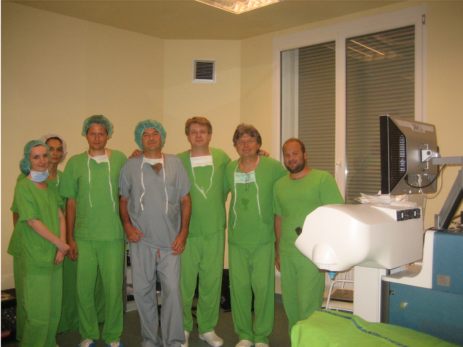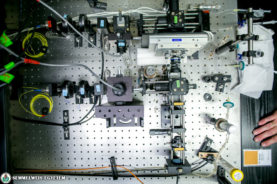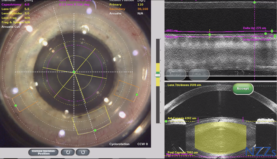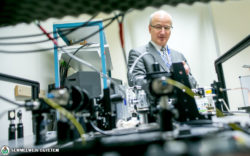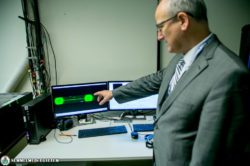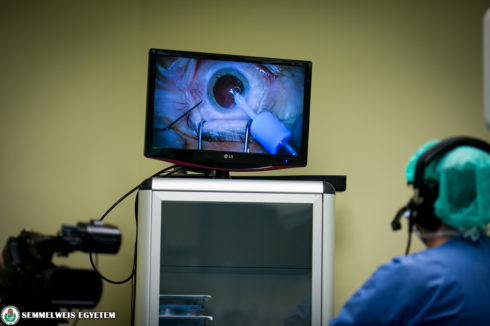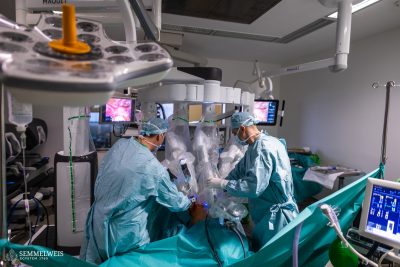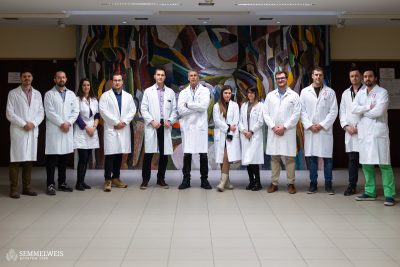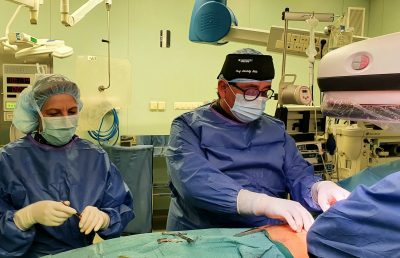“How is DNA ejected from the virus during the infectious process and what is the correlation between cardiomyopathy and titin protein mutation?” These are only a few of the main areas of research at the Department of Biophysics and Radiation Biology carried out with the help of optical tweezers. Another type of laser technology has been used at the Department of Ophthalmology for quite a long time now: Dr. Zoltán Zsolt Nagy, Director of the Department was the first in the world to perform cataract surgery with the use of femto laser 10 years ago. These are the laser technology innovations that have been awarded with Nobel Prize in Physics this year. Arthur Ashkin, Gérard Mourou and Donna Strickland this year’s Nobel laureates in Physics will receive the prize on 10th December.
 Currently there are two laser tweezer devices at the Department of Biophysics and Radiation Biology. The older one was made by Dr. Miklós Kellermayer, Director of the Department 10 years ago, which became Semmelweis University’s first laser tweezer. In March 2018, a new one, made by Dutch researchers, was procured, which can be combined with the fluorescence microscope.
Currently there are two laser tweezer devices at the Department of Biophysics and Radiation Biology. The older one was made by Dr. Miklós Kellermayer, Director of the Department 10 years ago, which became Semmelweis University’s first laser tweezer. In March 2018, a new one, made by Dutch researchers, was procured, which can be combined with the fluorescence microscope.
Optical tweezers enable the close mechanical inspection even of a single molecule: its flexibility can be measured or the forces resulting from the interactions between molecules.
“Arthur Ashkin, winner of the Nobel Prize in Physics 2018, first published an article on how microscopical particles can be trapped by focused laser beams in 1970.” ,said Dr. Miklós Kellermayer.
Work related to its biological application started at the beginning of the 1990s with the active participation of Dr. Miklós Kellermayer, then a postdoctoral fellow at Washington State University. He made his first laser tweezer in 1995 and his research group was among the first to capture and unfold tinin, a single protein molecule and measure its flexibility.
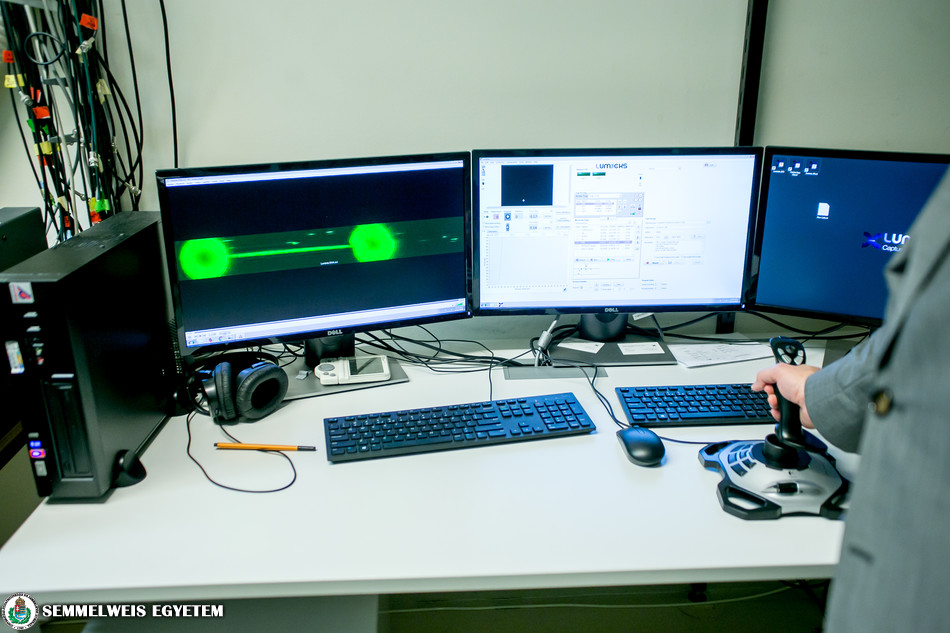 Laser tweezer is a complex device incorporating various technologies, such as optics, electronics, piezoelectric motors, microfluidics and information technologies. The researcher coordinating the movement of the tweezers uses an equipment similar to a joystick or mouse, and the whole process can be followed on a monitor. The molecule is attached to polymer pearl of 2-3 micrometres of diameter, which functions as a handle, thus the molecule can be held with the use of the tweezer. Apart from tinin, research at the Department focuses on DNA-related phenomena.
Laser tweezer is a complex device incorporating various technologies, such as optics, electronics, piezoelectric motors, microfluidics and information technologies. The researcher coordinating the movement of the tweezers uses an equipment similar to a joystick or mouse, and the whole process can be followed on a monitor. The molecule is attached to polymer pearl of 2-3 micrometres of diameter, which functions as a handle, thus the molecule can be held with the use of the tweezer. Apart from tinin, research at the Department focuses on DNA-related phenomena.
“The major part of bacteriophages (viruses infecting bacteria) contain double stranded DNA that is surrounded by a protein coat, called capsid. When bacteriophages are in the process of infection, this DNA is ejected from its shell. If we understand how the ejection happens, ie. how the infectious mechanism of the virus works, we will probably understand, how this process might be stopped and how viral infection could be prevented.”, explained Dr. Miklós Kellermayer.
The other significant area of research is the examination of tinin, that plays a role in cardiac muscle contractions. It is believed that tinin mutations might affect cardiomyopathy, a leading cause of heart failure, therefore the main objective of the research is to understand this relationship.
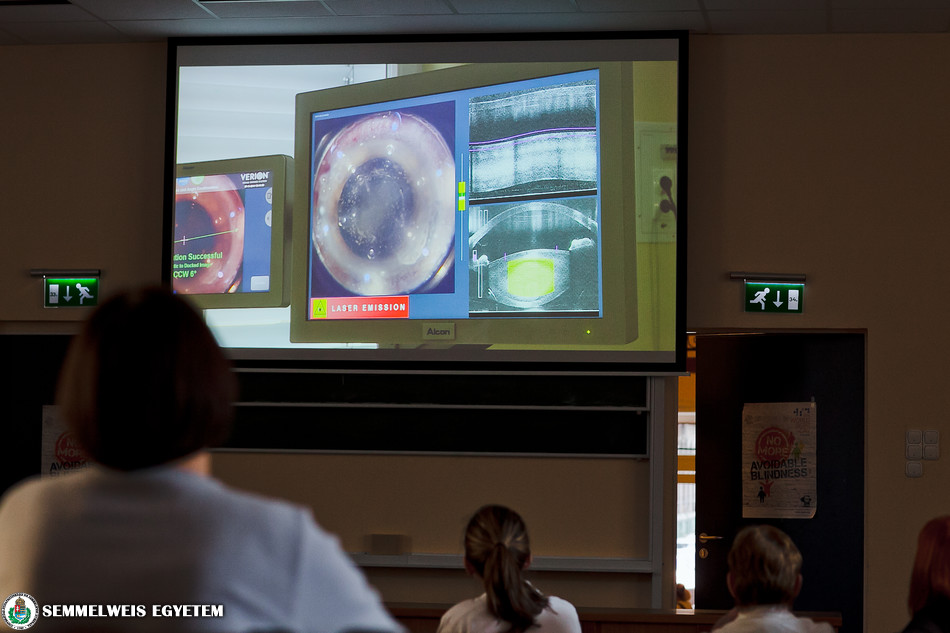 Gérard Mourou and Donna Strickland received the Nobel Prize for the development of techniques to make ultra-short, ultra-intense laser pulses. This laser technology enabled Dr. Tibor Juhász and Dr. Zsolt Bor, Hungarian professors of physics to develop femtosecond lasers, primarily used in opthalmologic surgeries. Today, millions of cornea-, LASIK-, and cataract surgeries are done with the use of this technology.
Gérard Mourou and Donna Strickland received the Nobel Prize for the development of techniques to make ultra-short, ultra-intense laser pulses. This laser technology enabled Dr. Tibor Juhász and Dr. Zsolt Bor, Hungarian professors of physics to develop femtosecond lasers, primarily used in opthalmologic surgeries. Today, millions of cornea-, LASIK-, and cataract surgeries are done with the use of this technology.
The first surgery with the use of femto laser in the world was performed at Semmelweis University’s Department of Ophthalmology by Dr. Zoltán Zsolt Nagy, Director in August, 2008. He had met Professor Tibor Juhász at the New Orleans conference of the American Academy of Ophthalmology, who offered Dr. Nagy a trial of the first femto laser prototype. For the first time, which was also successful, it was used for capsulorhexis (a curvilinear cut on the outer capsule of the lens), the first step in cataract surgery.
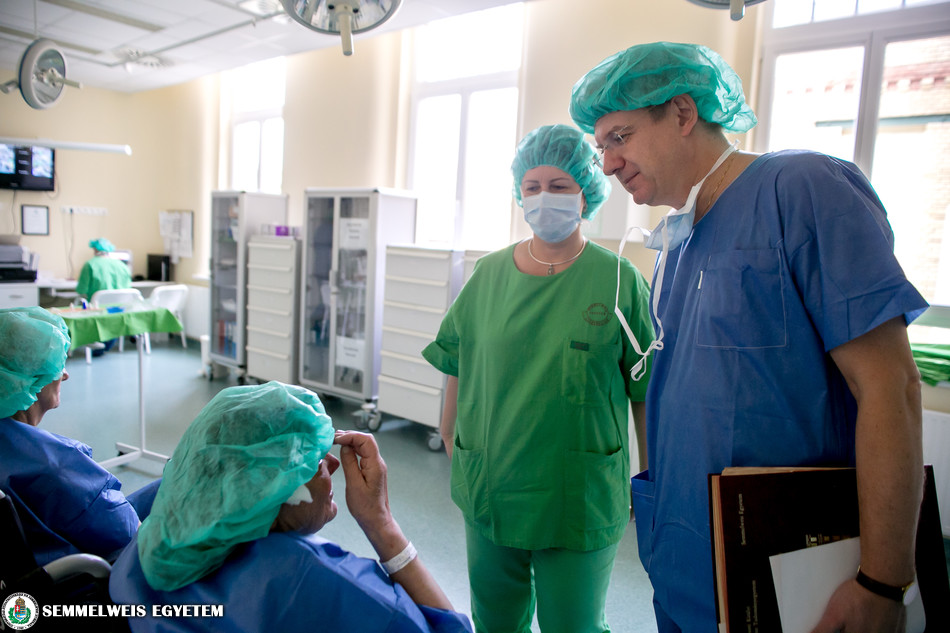 “Thanks to further development, today the first three steps of cataract surgery (capsulorhexis, the dissection of the lens and the preparation of the cataract scar) are performed by a computer-driven femto laser, which makes surgery automatic and more secure by adjusting problems caused by involuntary eye movement. This greatly helps the work of the surgeon.”, Dr. Zoltán Zsolt Nagy said.
“Thanks to further development, today the first three steps of cataract surgery (capsulorhexis, the dissection of the lens and the preparation of the cataract scar) are performed by a computer-driven femto laser, which makes surgery automatic and more secure by adjusting problems caused by involuntary eye movement. This greatly helps the work of the surgeon.”, Dr. Zoltán Zsolt Nagy said.
Although ophthalmology has always been a field of medicine to pioneer in the use of lasers, earlier technologies could not be used in cataract surgeries, as they require incisions smaller than a micrometre. However, femto laser has a very accurate focus, it is able to make incisions smaller than a micrometre and to make curvilinear cuts on the surface of the cornea.
“If we align these laser pulses, a cut surface is created and laser is 20-30 times more accurate in cutting than a human hand.”, the Director said.
Since the first surgery, several thousand surgeries using femto laser technology have been performed at the Department of Ophthalmology but as it is fairly expensive, modern ultrasound technology is used in everyday practice.
Pálma Dobozi
Photo: Attila Kovács – Semmelweis University; Department of Ophthalmology
Translation: Ágnes Raubinek
